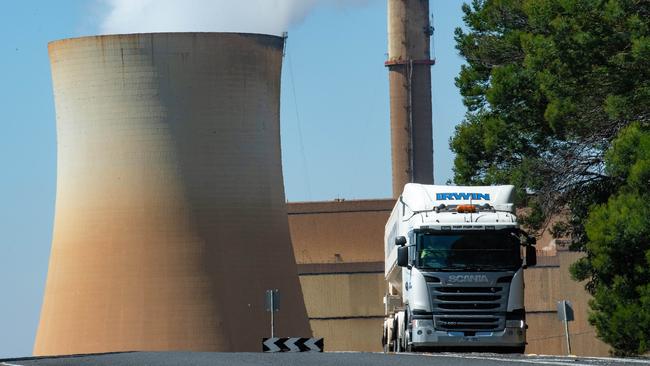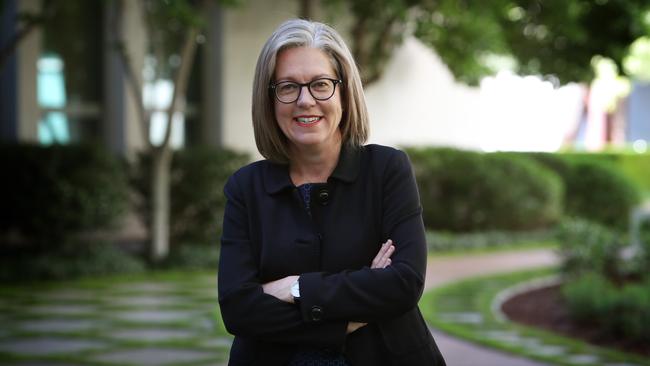
He argues the feds’ big stick legislation was aimed at lowering prices and in the process destroyed the market’s self-correcting mechanism.
It is one of many conflicting state and federal policies that intervene to destroy normal market signals.
Origin’s NSW power station Eraring will be next to bring forward its closing date (2032), while AGL’s Liddell plant is due to close in 2022.
At month’s end, AGL’s Brett Redman could well follow the lead of European utilities like RWE and split his retail and renewable assets from his coal-fired generation assets to help manage the transition.
AGL would in effect become Good Co and Coal Co and it is notable this week he added to the mix with more commercial solar assets to boost the former.
EnergyAustralia’s Catherine Tanna put it well, saying: “The energy transition is too important to leave to chance — a plan that supports people in the Latrobe Valley and locks in energy storage capacity before Yallourn retires to ensure the smoothest transition possible.”
She is taking the only logical commercial decision and is giving everyone plenty of time to prepare for the closure.
This compares with French-based Engie, which gave just four months notice before closing the Hazlewood plant.
The Yallourn plant has broken down some 50 times since 2017.
The closure of one plant may work to ensure another coal-based plan survives to manage the output, but at the end of the day it comes down to basic economics.
There will be just two brown coal plants left in Victoria — the AGL-owned Loy Yang A and Alinta owner Chow Tai Fock’s Loy Yang B, which has a designed life until 2050.
Whether it sees out that time remains to be seen.
Yallourn’s early demise surprised no one in the industry, with one player saying: “It’s an incredibly tight market so something had to give.”
The wholesale electricity price has collapsed 70 per cent over the past 18 months through a combination of massive increases in renewables supply and fall in demand due to COVID and a mild summer.
No one is expecting the prices to recover any time soon and in fact Price argues the generators are caught by the terms of the federal government’s big stick legislation, which restrict their ability to move prices.
Supply is being pushed by the states boosting renewables such as solar rooftops, and generator margins have disappeared.
At his recent results presentation, Origin’s Frank Calabria said: “It’s actually going to be a pretty messy period of time. You will see us running our generation less at Eraring. That’s what you’re seeing now. We have to do enough to keep capacity available when it’s needed and manage within the flexible window of that asset.”
The problem with Yallourn was its lack of flexibility.
Calabria has already planned for the closure of Eraring with a 700MW battery slated to start operating from next year.
Tanna plans to install a 350MW battery by 2026, two years before Yallourn shuts.
Neither will replace the coal-fired power station, but will back up renewable generation.
Tanna is also looking at adding a fast start gas-fired plant in NSW that will be hydrogen ready to enable it to plug into a new power source. The Yallourn power station is the oldest brown coal generator, which employs 500 people, and supplies 22 per cent of Victoria’s power and 8 per cent of the national market.
The Victorian government has agreed to a safety net if EA cannot meet its commitment to keep the plant running until 2028, four years earlier than its planned closure.
Federal Energy Minister Angus Taylor said: “As an essential service, the commonwealth government expects the market to step up to deliver enough dispatchable generation to keep the lights on and prices low once Yallourn closes.”
It would help if he let the market work while also encouraging demand by backing electric vehicles and other mechanisms.
With NSW and other states pushing ahead with plans to boost renewables supply, Calabria’s call about the messy future is the right one.
Tanna and the Victorian government have at least made a long-term call.

Chester’s ASIC pitch
On Josh Frydenberg’s timetable, ASIC boss James Shipton will be in the chair until the end of April and Shipton’s deputy Karen Chester is wasting no time in pressing her credentials in his absence, noting in a speech in Sydney on Wednesday the regulator has been simply getting on with business.
It has the “buy now, pay later” sector primed to be the first under fire when the design and distribution rules take effect from October, putting the onus on the sector to ensure its products are meeting the right targets.
There is a long line of work in the superannuation sector and ASIC has already had the big banks and AMP in for a chat as part of its express investigation model, with problem areas highlighted and the companies on notice to rectify the issues post haste.
In case the Treasurer was not aware of her past roles, including as head of Deloitte economics, Chester confided in a warning about cybersecurity that her firm was an early victim at the start of the century.
Epic app tussle
ACCC boss Rod Sims has led the way with market studies leading to the media bargaining code, this month’s draft on mobile phone apps and shining the light on Google’s control of the digital advertising market.
Some argue more “tough” litigation would help and, in its void, US-based games group Epic has come out all guns firing.
On Wednesday it launched an abuse of market power (section 46) case against Google, adding to an earlier action against Apple over mobile phone app charges.
Apple and Google account for 99 per cent of the operating systems for Australian mobile devices and both impose a surcharge of 30 per cent of revenues on app developers that use their systems.
The ACCC is finalising its draft report on the app industry.
Sims welcomed the action, saying “it’s good to see private actions from well resourced companies to test the law. It’s also understandable to see the action against Google as well as Apple because they both operate differently.”
The Google case will be heard by Justice Nye Perram in the Federal Court, and he is also hearing the Apple case. It alleges the surcharges impose a tax on game developers and destroy competition.
Epic boss Tim Sweeney is taking a global assault on the mobile phone operators in an attempt to open up competition.





Frontier Economics energy guru Danny Price figures the early closure of Yallourn is just the first of many early shutdowns that will hit the industry in the not too distant future due to a lethal combination of government regulation interfering with the basic laws of economics.